Introduction
The Himalayas, often referred to as the “abode of snow,” is a vast mountain range in Asia, stretching across five countries: India, Nepal, Bhutan, China, and Pakistan. This majestic range spans over 2,400 kilometers (1,500 miles) and reaches widths of up to 400 kilometers (250 miles) in some areas.
It is home to some of the highest peaks in the world, including Mount Everest, which at 8,848.86 meters (29,031.7 feet) is the highest point on Earth. The Himalayas are not just a geographical feature; they are a complex, culturally rich, and ecologically significant region that plays a critical role in the environmental and cultural landscapes of Asia.

The formation of the Himalayas began around 50 million years ago when the Indian tectonic plate collided with the Eurasian plate. This ongoing process of tectonic movement continues to elevate the mountain range, making it one of the youngest and most geologically active in the world.
The continuous uplift of the Himalayas leads to frequent seismic activity, and their rugged terrain includes deep valleys, high ridges, and expansive glaciers that are continuously shaped by erosion and weathering.
The Himalayan range is divided into several major subranges, each with its unique characteristics. The Greater Himalayas, also known as the “Himadri,” contain the highest peaks, including Everest, K2, and Kanchenjunga.
Below this lies the Lesser Himalayas or “Himachal,” characterized by relatively lower peaks and higher population densities. The outermost range is the Shivaliks, which consists of hills and lowlands. Between these ranges are fertile valleys, such as the Kashmir Valley and the Kathmandu Valley, which have been historically significant for trade, culture, and agriculture.
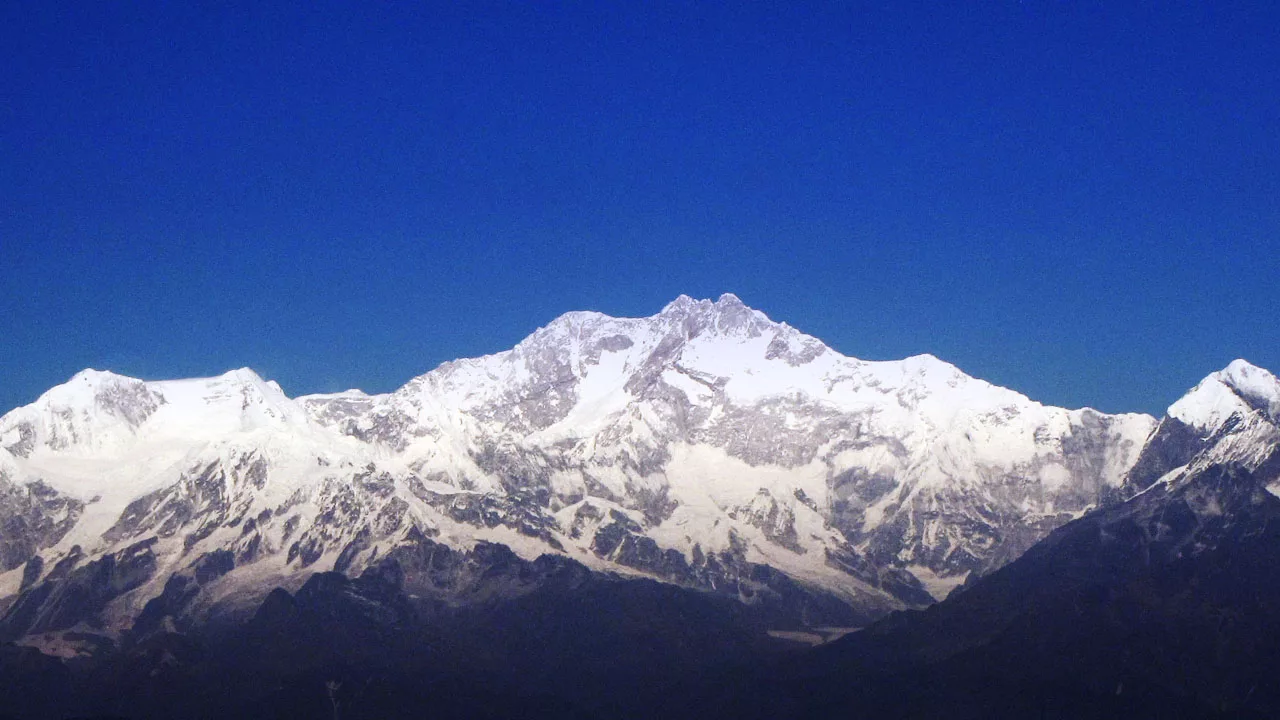
The Himalayas have an important influence on the climate of the region. The range acts as a barrier to the cold winds from the north, creating a warm and humid climate to the south, which is ideal for agriculture in places like Nepal, Bhutan, and parts of India. On the northern side of the range, the climate is much harsher and colder, characterized by arid conditions in regions like Ladakh. The mountains also contribute to the monsoon patterns in the Indian subcontinent. The heavy rainfall in the foothills of the Himalayas supports lush forests, which gradually give way to alpine meadows and snow-capped peaks at higher elevations.
The Himalayas are rich in biodiversity, supporting a wide array of flora and fauna. The lower slopes of the mountains are home to temperate forests, where species such as oak, pine, and rhododendron thrive.
As one ascends, the flora transitions to alpine plants and grasses. The region is also home to iconic wildlife, including the snow leopard, Himalayan tahr, red panda, and various species of pheasants. The forests and meadows of the Himalayas are crucial habitats for these species, many of which are endemic and threatened by climate change, poaching, and habitat destruction.
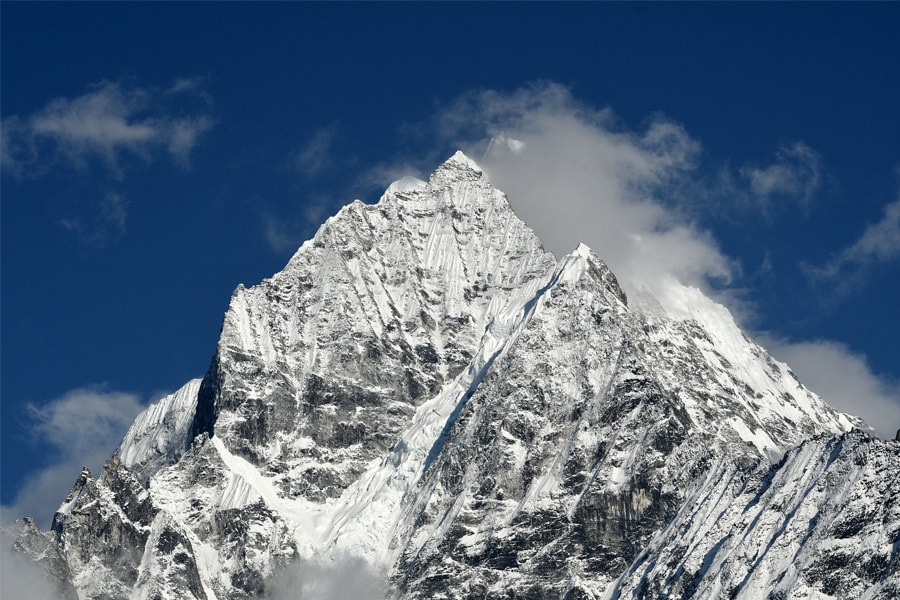
In addition to its natural beauty, the Himalayas are deeply intertwined with the cultures, religions, and traditions of the people who inhabit the region. The range is of immense spiritual significance, particularly in Hinduism and Buddhism.
The Himalayas are considered the home of the gods, with numerous sacred sites scattered across the region. Mount Kailash, in Tibet, is regarded as the abode of Lord Shiva in Hinduism, while it is also a holy site for Buddhists, Jains, and Bon practitioners. Pilgrimages to these sacred mountains are an important aspect of religious life for millions of people.
The Himalayas have also been historically significant as a route for trade and cultural exchange. The ancient Silk Road passed through some parts of the region, and the mountains have served as a natural barrier that influenced the development of distinct cultural identities in the regions they encompass.
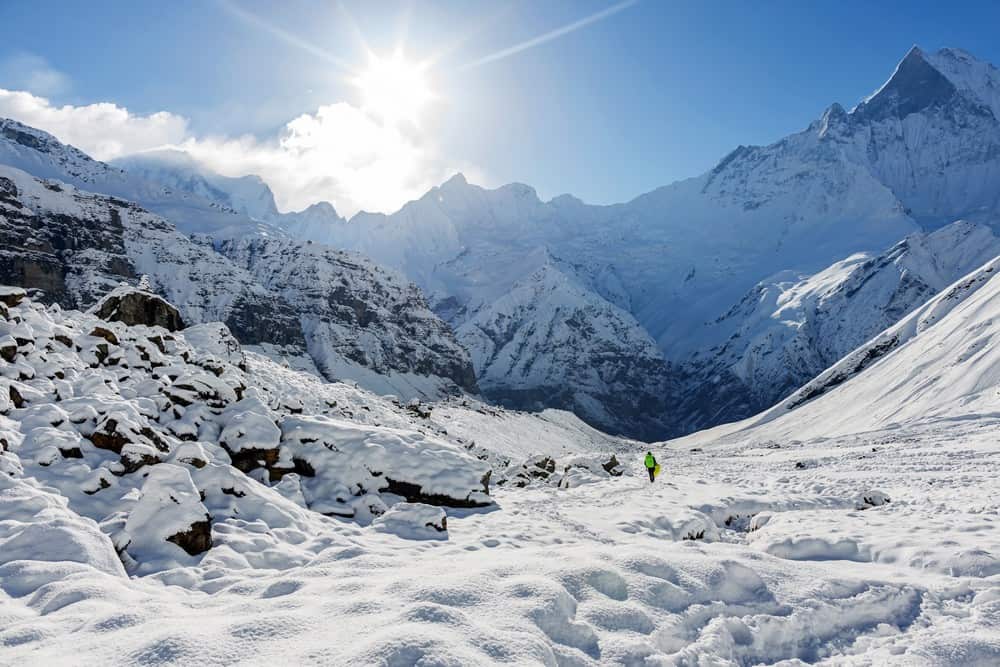
The mountain range’s isolation has allowed for the preservation of ancient traditions, languages, and practices that are unique to the various ethnic groups, such as the Sherpas of Nepal, the Tibetans of China, and the Ladakhis of India.
In modern times, the Himalayas are not only a popular destination for trekking, mountaineering, and adventure tourism but also a region of political and strategic importance. Disputes over border areas, particularly between India, China, and Pakistan, have made the Himalayas a focal point of geopolitical tensions. The region has also been affected by the effects of climate change, with glaciers retreating at alarming rates and altering water supply patterns for millions of people who depend on the rivers originating from the mountain range.
Some Mysteries related to Himalayas
1. The Disappearance of the Missing Mountaineers
In the heart of the Himalayas, there are numerous accounts of mountaineers who vanished without a trace. Most notably, in 1950, the French expedition to Annapurna saw its members disappear mysteriously in the vast and treacherous mountainside. Despite extensive searches, no bodies or clues have been found to explain their sudden disappearance. Did they fall into hidden crevasses? Or were they taken by something more inexplicable?
This mystery deepens with other cases of climbers who have ventured into these mountains only to vanish. One intriguing element of these disappearances is that they often occur at high altitudes, where few search parties venture. These climbers are not just ordinary adventurers, but skilled professionals. How do they disappear with no trace, in one of the most thoroughly explored mountain ranges?
Some say the Himalayas have a secret power—one that lures climbers to their doom. In local folklore, the mountains are often described as being “alive,” with guardian spirits who keep watch over their sacred lands. Could the ancient beliefs of the local people hold the key to understanding these mysterious disappearances?

Adding another layer of mystery is the strange radio silence that has been reported at the highest peaks. Several mountaineers have claimed that their radios stopped working just before their disappearance. Could the Himalayan mountains be home to electromagnetic forces that disrupt communication devices?
Furthermore, many expeditions report encountering areas where the weather changes inexplicably. One moment, a clear sky is visible, and the next, a violent storm brews without warning. The wild shifts in weather conditions at such high altitudes make it seem as though these mountains have a will of their own.
No matter the advancements in technology, the missing mountaineers remain a chilling reminder of the dangers and secrets that lie within the folds of the Himalayas. Is there an answer to their fate, or are they simply another part of the range’s unspoken mysteries?
2. The Yeti: A Creature of Legend or Reality?
The Yeti, or the “Abominable Snowman,” is perhaps one of the most famous Himalayan mysteries. Sightings of a large, ape-like creature with white fur have been reported by locals for centuries. What is the truth behind these claims, and why do they continue to persist despite scientific skepticism?
For centuries, the Yeti has been a part of Himalayan folklore. Local Sherpas speak of encounters with a creature that resembles a giant man-beast, one that roams the snow-covered peaks of the mountains. Descriptions vary, but the common theme is that it is elusive, terrifying, and strangely intelligent. However, Western explorers first heard of the Yeti in the 19th century, sparking interest from anthropologists and cryptozoologists alike.
A more puzzling aspect of the Yeti legend is the physical evidence—or lack thereof. Over the years, footprints have been found, some in snow, others in rocky terrain, but each time, they are just out of reach of conclusive proof. In 1951, British explorer Eric Shipton took a famous photograph of large footprints in the snow, fueling speculation. But these prints have never been definitively linked to a large unknown species.

Over the decades, expeditions to find the Yeti have resulted in nothing more than false alarms and misleading evidence. Some believe the Yeti is a distant relative of the prehistoric Gigantopithecus, a large ape thought to have gone extinct thousands of years ago. Could such a creature have survived in the hidden corners of the Himalayas, unnoticed?
Another possibility lies in the theory that the Yeti could be a misidentified animal, such as a bear or large ape, with unusual fur coloring. Some experts argue that in the remote, harsh terrain of the Himalayas, it’s easy to mistake ordinary animals for something far more fantastical.
Despite the lack of concrete evidence, the legend of the Yeti remains a powerful force in the Himalayas. Could this creature be real, or is it simply the product of imagination fueled by the isolation of the highest mountain range in the world?
3. The Valley of the Flowers: A Place That Doesn’t Exist?
One of the most compelling and perplexing mysteries of the Himalayas is the existence of the so-called “Valley of the Flowers.” Described by early explorers as an Edenic paradise filled with a rare array of flowers, this valley was said to be tucked away in a remote part of the mountains, somewhere in northern India. Yet, for all the detailed descriptions, the valley has never been located by modern explorers.
The first written account of the Valley of the Flowers dates back to the 19th century, when British explorer, F. S. Smythe, reported stumbling upon it during an expedition in the region. He described the area as a “breathtaking garden,” filled with colors and flora unlike anything ever seen before. It was so beautiful that he was convinced it was a divine gift. But despite his detailed accounts, no one could locate this hidden valley again.
As the mystery deepens, some suggest the Valley could be a myth, born out of the longing for an unreachable paradise. But others believe that the valley may have been swallowed by a massive avalanche or some other natural disaster, concealing it forever from human eyes.

In recent years, adventurers and botanists have scoured the region, hoping to find even a trace of the flowers described by Smythe. Their efforts have so far been unsuccessful. Some claim that the valley is cursed, a place so pure and untouched that humans are not meant to discover it.
Adding to the enigma, there have been reports from trekkers who, while exploring nearby regions, believe they’ve glimpsed strange flower-filled meadows—only to have them disappear when they approach. Could the Valley of the Flowers still exist, hidden in the vast labyrinth of Himalayan mountains, or was it merely a dream woven into the fabric of history?
Whether the Valley of the Flowers is real or not remains an unsolved riddle. Perhaps the mystery is not just about the valley itself, but about the inexplicable nature of the Himalayas—a place that never fully reveals all its secrets.
4. The Mysterious Lights of the Himalayas
On clear nights, travelers in the Himalayas sometimes report seeing strange lights in the sky, hovering over the mountains. These lights appear to move erratically and are often mistaken for UFOs. The phenomenon has intrigued locals and scientists for years, but no one has been able to explain them fully.
Many of the reports come from villages located on the fringes of the mountain range, where residents claim to have witnessed flickering lights dancing in the sky for hours. These lights are often described as being bright, pulsating, and sometimes even changing color. What are these mysterious lights? Are they an atmospheric phenomenon, or something far more extraordinary?
Some researchers believe that the lights could be a result of natural electromagnetic activity in the mountains, similar to what is known as “ball lightning.” Others suggest that the lights could be caused by the unique geography of the region, which might influence light refraction or produce optical illusions.

A more intriguing theory proposes that the lights are connected to the ancient spiritual practices of the mountain people. Some cultures in the region believe that the Himalayas are inhabited by gods, and these lights could be manifestations of divine activity. Could these phenomena be the result of some cosmic or supernatural force, rather than natural or scientific explanations?
Despite the numerous explanations put forth, no one has been able to capture definitive footage or photos of the lights, adding to their mystique. The lights continue to perplex both locals and outsiders alike, leaving behind an unresolved mystery that only deepens the intrigue of the Himalayas.
Whether they are the result of natural causes or something beyond our understanding, the mysterious lights remain a prominent, unexplainable feature of the Himalayan landscape.
5. The Sacred Cave of Amarnath: A Divine Puzzle
Deep within the icy reaches of the Himalayas lies the Amarnath Cave, a site that draws pilgrims from across the globe. Inside, an ice formation resembling the Hindu god Shiva is said to appear every year. This strange ice lingam grows and shrinks with the seasons, and its origins remain a subject of intense mystery.
According to Hindu mythology, the cave is where Shiva revealed the secrets of immortality to his wife Parvati. The mystery of how the ice formation forms and changes has baffled researchers for years. Some believe that it is a natural phenomenon—an unusual combination of water and air temperature that creates the appearance of a lingam. But others believe the formation is a divine miracle, a testament to the power of Shiva.
Pilgrims traveling to the cave face tremendous hardships, including harsh weather conditions and dangerous terrain. Yet, despite the challenges, the cave remains a place of unwavering devotion, where many believe they can receive blessings and spiritual enlightenment. Is the ice formation truly a divine manifestation, or is it merely a strange geological occurrence?
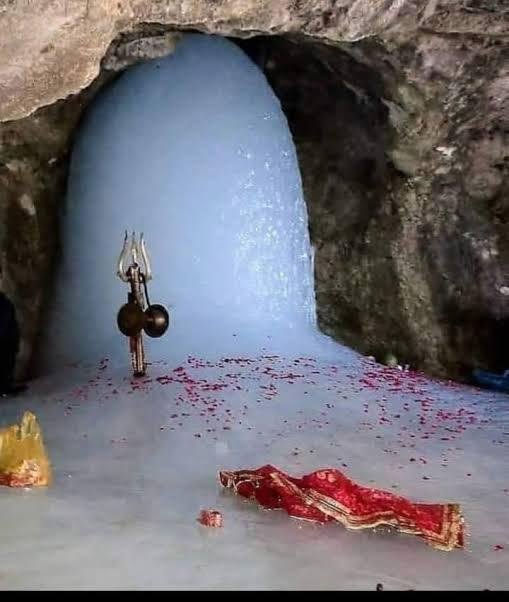
Adding to the mystery is the timing of the ice formation’s growth. Every year, it appears to be more significant than the last, peaking during the full moon of the Shravan month, a sacred time for Hindus. Could there be a cosmic or celestial alignment that influences the shape and size of the ice lingam?
Skeptics continue to debate the origins of this sacred ice, with many pointing to the area’s unique climatic conditions. Yet, the unwavering belief of the millions who make the pilgrimage every year suggests that there is more to the story than meets the eye.
The cave remains one of the greatest mysteries of the Himalayas, a place where the boundaries between nature and the divine blur into a single enigma.
6. The Ghostly Sounds of the Himalayas: Echoes of the Past?
In the remote regions of the Himalayas, trekkers and villagers have long reported hearing ghostly sounds that echo through the mountain valleys. These eerie noises include whispers, wails, and distant voices that seem to come from nowhere. The mystery deepens when these sounds appear at certain times of the year, often in the dead of night, and always when the weather is most inhospitable.
Local legends suggest that these sounds are the voices of spirits—lost souls who perished in the unforgiving mountain terrain. According to ancient beliefs, the Himalayas are a sacred space, and the spirits of those who failed to conquer the mountains linger in the air, their voices a constant reminder of the dangers that await the unwary. But could these sounds also be a natural phenomenon?
Some scientists speculate that the sounds could be the result of peculiar wind patterns that form in the deep valleys, amplifying natural noises and making them sound like whispers or voices. The high-altitude winds in these mountains are known for their unpredictable and sometimes terrifying strength, which can distort sound waves. But this theory doesn’t fully explain the strange consistency of the sounds or their timing.

What makes the mystery even more unsettling is that the sounds often occur in areas where people have reported feeling an overwhelming sense of dread. Is it possible that the spirits of those lost in these mountains communicate with the living through these sounds, or is it simply a trick of the mind—an auditory illusion created by the extreme environment?
Whatever the explanation, the eerie sounds of the Himalayas remain an enduring mystery. Some believe they are a manifestation of the mountains’ power, a reminder that the region is not merely a collection of rocks and ice, but a living, breathing entity that demands respect.
7. The Disappearing Lake of Rara: A Vanishing Act in the Himalayas
Rara Lake, located in the northernmost part of Nepal, is one of the most mysterious bodies of water in the Himalayas. Known for its extraordinary beauty and clear blue waters, the lake has baffled locals and explorers alike due to its strange and unpredictable behavior. Every few years, the lake mysteriously shrinks to nearly half its size, only to return to its original dimensions later, leaving behind puzzled onlookers.
Scientists have yet to explain why Rara Lake behaves this way. Some propose that it may be connected to underground water systems, with fluctuating water levels caused by shifts in the subterranean flow. However, the phenomenon of the lake’s sudden shrinkage and return has led many to believe that something more supernatural is at play.
Local folklore adds an eerie dimension to the mystery. The lake is said to be sacred, and it is believed that the shrinking of the lake occurs as a result of divine displeasure. According to the legend, if the lake completely dries up, it will signal the end of an era. This belief has persisted for generations, with each disappearance of the lake’s waters seen as an omen or warning.
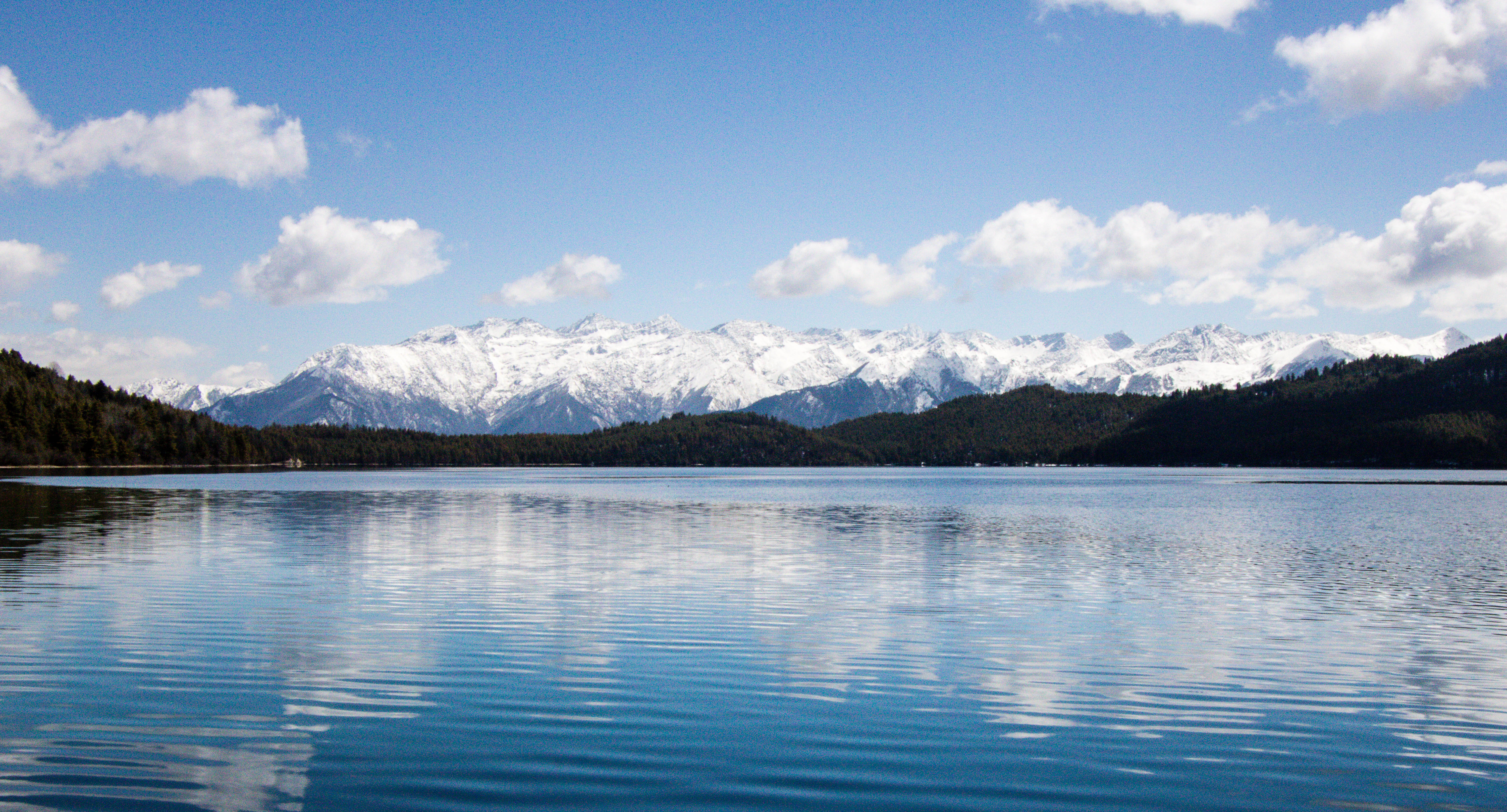
What further deepens the mystery is the fact that no natural disaster or human activity appears to be responsible for the vanishing act. No evidence of earthquakes, landslides, or man-made interventions has been found to explain the sudden changes in water levels. Could it be that Rara Lake is more than just a body of water? Is it a spiritual or mystical entity that communicates with the people who live nearby in its own cryptic way?
Despite the mystery, Rara Lake continues to be a popular destination for trekkers, many of whom are drawn to its enchanting beauty. But for those who stay long enough, there is always the question of whether the lake will once again shrink before their eyes.
8. The Lost Kingdom of Shambhala: A Hidden Utopia in the Himalayas
The legend of Shambhala, a mystical kingdom hidden somewhere in the vastness of the Himalayas, has captivated adventurers, mystics, and explorers for centuries. Described as a utopian society of enlightened beings, Shambhala is said to be a place of peace, prosperity, and extraordinary spiritual power. But the question remains: does this kingdom truly exist, or is it merely a myth?
The first known accounts of Shambhala come from Tibetan Buddhist traditions, where the kingdom is said to be located somewhere beyond the physical world, accessible only to those who possess the wisdom to find it. Some legends suggest that the kingdom is hidden deep within the mountains, protected by powerful forces that prevent outsiders from finding it. Others say that the kingdom exists in a parallel dimension, only appearing to those who are worthy of its secrets.

Numerous expeditions have been launched in search of Shambhala, with adventurers trekking through the most inhospitable parts of the Himalayas, hoping to uncover the fabled kingdom. However, all these attempts have been met with failure, and the location of Shambhala remains a mystery. Some claim to have come close to finding it, only to experience inexplicable events that send them back without further answers.
One of the most puzzling aspects of the Shambhala legend is its endurance over time. Despite the passage of centuries, the belief in the kingdom continues to thrive among certain Tibetan and Himalayan communities. The idea of a hidden, divine realm seems to resonate with people who live in one of the most challenging environments on Earth. Could there be some truth to these ancient stories?
In recent years, some spiritual seekers have begun to suggest that Shambhala is not a physical place, but rather a state of mind—a spiritual awakening that one can attain only by transcending the limitations of the material world. Others remain convinced that Shambhala is a real place, waiting to be discovered. Until then, the lost kingdom remains one of the greatest mysteries of the Himalayas.
9. The Mysterious Black Rock of Kangchenjunga
Kangchenjunga, the third-highest peak in the world, is known for its imposing presence and the many challenges it poses to climbers. But there is a particular mystery surrounding one part of this mountain: a large black rock located at the summit. This rock, known as the “Black Rock of Kangchenjunga,” has intrigued mountaineers and scientists alike due to its unnatural appearance and the strange properties it seems to exhibit.
The rock is unlike any other found in the region. Unlike the surrounding granite and ice, the Black Rock is smooth, jet-black, and almost perfectly round. Its size is also perplexing, as it seems out of place amidst the jagged peaks and ridges that dominate the landscape of Kangchenjunga. Some climbers claim that the rock exudes an otherworldly energy, making them feel unusually uneasy when near it.

Various theories have been proposed to explain the Black Rock, ranging from natural causes to supernatural ones. Some geologists believe that the rock is a rare type of mineral, possibly a volcanic stone that formed under unique conditions. Others speculate that it could be a meteorite, though no scientific evidence has ever confirmed this.
The most persistent theory, however, is that the Black Rock holds spiritual significance. According to local legends, the rock is a sacred object, placed by ancient gods to protect the mountain from invaders. Many Sherpas and local villagers refuse to approach the rock, believing that disturbing it will bring misfortune or anger the mountain spirits.
While no conclusive explanation has emerged, the Black Rock remains an enduring mystery, adding to the mystique of Kangchenjunga. Climbers who make their way to the summit often report feeling a strange pull to the rock, as though they are being watched or guided by an unseen force.
10. The Enigmatic Ice Cave of Bhutan
High in the mountains of Bhutan lies a cave made entirely of ice. Located deep within the uncharted wilderness, the cave is a place few have ever seen. Stories of its discovery by an expedition in the 1980s have fueled rumors and speculation ever since. What makes this cave so unusual is not just its ice but the strange symbols and markings that cover its walls.
The cave is said to be ancient, with some claiming that it has been a sacred site for centuries. The carvings on the ice appear to be of a language no one can decipher, and the formations inside the cave are unlike any seen before. Some researchers suggest that the cave is a natural phenomenon, formed by centuries of ice accumulation. But others believe it to be a place of great spiritual significance, hidden away by an ancient civilization.

Those who have ventured close to the cave have reported strange occurrences. Some have claimed to feel a strange energy emanating from the cave, while others have heard faint whispers or seen fleeting shadows. Is this cave merely an optical illusion, a strange geological anomaly, or could it be something more?
The Bhutanese government has kept the exact location of the cave a closely guarded secret, further fueling theories about its mysterious origins. Some believe that the cave is the last remnant of a lost civilization, hidden deep within the Himalayas. Whether it is a natural wonder or a site of ancient power, the ice cave remains one of the most captivating and unexplained mysteries of the region.
11. The Curse of the Nanda Devi Peak
Nanda Devi, the second-highest mountain in India, is notorious for the strange and eerie incidents that surround it. Known for its formidable height and harsh conditions, it has claimed many lives throughout history. But one of the most chilling mysteries of the peak revolves around the “Nanda Devi Curse,” a belief that the mountain is cursed and that all those who attempt to conquer it will face misfortune.
The curse’s origins are tied to ancient folklore and the reverence the local people have for the mountain. Nanda Devi is considered a goddess, and the area around the peak is sacred. Some believe that those who venture too close or attempt to scale the mountain anger the goddess, invoking a curse that leads to death or misfortune. A tragic series of events only deepened the mystery in the 1960s when a British expedition, attempting to climb the mountain, had its entire team perish under strange and unexplained circumstances.

The most puzzling incident involved a team that climbed to the summit and never returned. While some initially speculated that the group was lost in the extreme conditions, no bodies or remnants were found despite extensive searches. What deepened the mystery was that an unusual weather pattern had formed during their expedition, described by locals as “the breath of the goddess.” It seemed as if the weather itself was conspiring to keep explorers away from the summit.
Some mountaineers and researchers believe that the Nanda Devi curse could simply be the result of extreme altitude sickness, which often leads to hallucinations and poor decision-making. But for many, the legend persists. Could the tragic events surrounding the mountain be linked to a divine force protecting the sacred peak?
The mountain’s history of unexplained deaths and disappearances continues to capture the imagination of explorers. Despite the passage of time, Nanda Devi remains an imposing and mysterious presence, forever associated with the belief that some places should never be disturbed.
12. The Unseen Roads: Himalayan Secret Pathways
Among the numerous mysteries that surround the Himalayas, there are whispered stories of secret pathways—ancient roads that lead to forgotten realms and hidden civilizations. These secret roads, thought to be long lost to time, are said to have once connected remote Himalayan communities to far-reaching parts of Asia. Some even believe that these paths led to sacred temples and ancient relics.
One of the most famous legends surrounding these roads is that they were used by monks and spiritual seekers to travel between isolated monasteries, carrying knowledge and spiritual wisdom. According to local lore, these pathways were so well hidden that they could only be discovered by those with specific knowledge or special guidance. Even today, locals claim to have seen figures wandering the mountains who seem to appear from nowhere and disappear just as mysteriously.

In more recent times, adventurers have set out to uncover these forgotten roads, but they often find themselves thwarted by the mountains’ harsh terrain. What’s even more perplexing is that some travelers report experiencing “time loss”—an inability to recall the hours or days spent in the mountains while searching for the roads. Could this suggest that these pathways exist in a different plane of reality, one where time flows differently, or is it simply a result of the mountains’ overwhelming power?
Despite the mystery, there have been occasional discoveries of ancient stone markers, weathered maps, and forgotten relics—evidence that at one point, the Himalayas were home to thriving civilizations. Some believe that these civilizations were far more advanced than previously imagined and that the roads led to places with knowledge that modern society has long forgotten.
While no one has yet discovered the full extent of the secret pathways, the notion of hidden roads remains a tantalizing mystery. Could the Himalayas still be hiding ancient secrets, waiting to be uncovered by those who are brave enough to seek them out?
13. The Vanishing Temple of Khumbu
Tucked away in the Khumbu region of Nepal, where Everest dominates the landscape, there is a legend about a mysterious temple that no one has ever been able to find. Said to be carved directly into the rock of the mountainside, the temple is thought to contain relics and artifacts of immense religious and historical significance. Yet, despite numerous searches over the years, no one has ever located it, and the temple seems to vanish without a trace whenever anyone comes close.
The first references to the temple come from ancient texts that describe its location as being hidden “in plain sight,” but only visible to those who are pure of heart and mind. Some say the temple shifts locations depending on the visitor, appearing only when it deems the seeker worthy. The belief is that the temple holds powerful knowledge, secrets that have the ability to change the course of history, and possibly even reveal the true origin of humanity’s connection with the divine.

Local monks and villagers have long held the belief that the temple is a spiritual test, intended to protect sacred knowledge from those who would misuse it. Many expeditions have been launched by adventurers, archaeologists, and religious scholars, all hoping to unearth the hidden structure. But every time, the expedition fails, often accompanied by inexplicable events such as lost maps, disappearing guides, and strange weather phenomena that prevent anyone from reaching the supposed temple site.
One theory suggests that the temple’s mystery lies in its connection to the spiritual realm. It is said that the temple cannot be found through traditional means; it only reveals itself when an individual reaches a higher state of consciousness or spiritual enlightenment. Could it be that the temple is not a physical place at all but a state of mind, one that can only be accessed by those who have transcended earthly desires?
Regardless of the theories, the mystery of the Vanishing Temple of Khumbu endures, fueling the imagination of all who seek its hidden wisdom. Will anyone ever be able to find it, or will it remain a secret locked away by the Himalayas themselves?
14. The Bloodstone of Mount Kailash
Mount Kailash, one of the most sacred peaks in the Himalayas, is not only a place of religious reverence but also the center of a puzzling mystery—the legend of the Bloodstone. According to Tibetan legends, a mystical stone, which glows with a blood-red hue, is said to lie somewhere on the slopes of Mount Kailash. This stone, known as the “Bloodstone,” is rumored to hold immense power and the ability to cure any illness or grant eternal life. However, it has never been seen, and many believe it is guarded by a divine force that prevents it from being uncovered by human hands.
The story of the Bloodstone has intrigued spiritual seekers for centuries. While some say it is a metaphor for enlightenment or spiritual power, others are convinced that it is an actual physical object hidden deep within the mountains. Those who claim to have found it speak of strange occurrences—disappearing paths, strange visions, and a sense of overwhelming presence, as if the mountain itself is alive and watching.
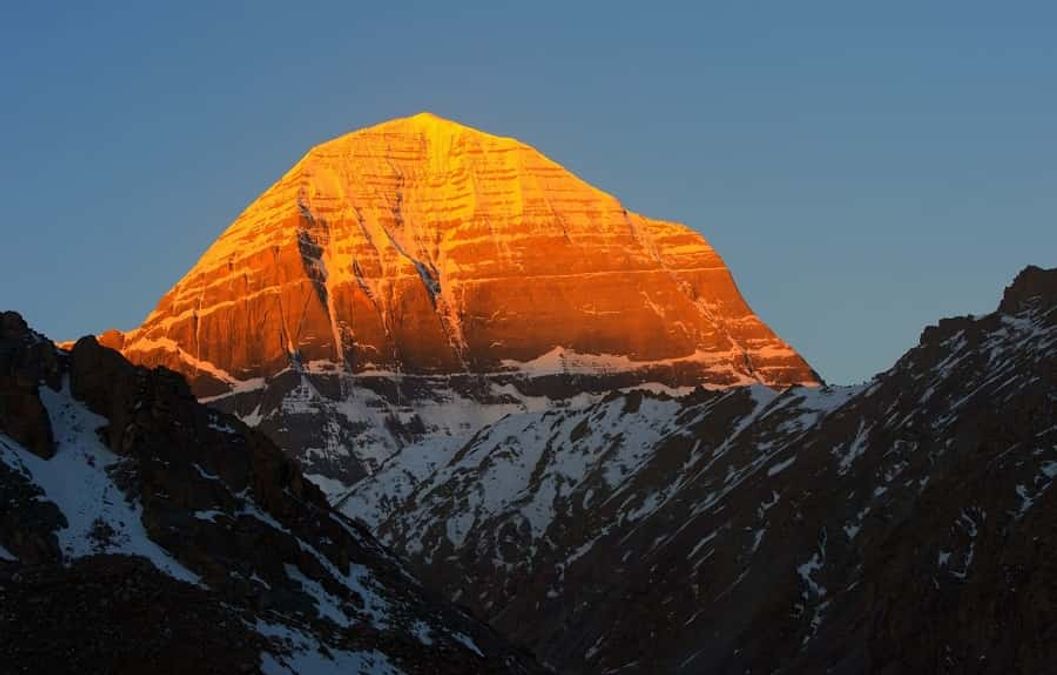
What makes this mystery even more compelling is the fact that many expeditions have been launched over the years in search of the Bloodstone, but none have been successful. Some explorers report having strange dreams or visions that guide them toward the stone, but as they approach, they are inexplicably turned back by an invisible force. Could it be that the mountain’s divine guardians are keeping the stone hidden from human reach?
The Bloodstone is also said to be connected to the ancient spiritual practices of the region, and some believe it holds the key to unlocking the secrets of life and death. Could this legendary artifact truly exist, or is it simply a part of the mythos surrounding one of the most sacred mountains on Earth?
15. The Disappearing River of Zanskar
In the remote region of Zanskar, located in the Indian Himalayas, there is a curious and puzzling phenomenon—a river that appears to vanish and reappear without any explanation. The Zanskar River, a lifeline for the local inhabitants, has baffled scientists and adventurers alike for its strange behavior. During certain seasons, the river completely disappears from view, only to reappear when the weather changes, flowing with an intensity far beyond what is expected.
What makes the disappearance of the river so extraordinary is that there are no apparent changes to the riverbed or the surrounding geography. The river’s water simply vanishes into thin air, leaving the land dry and barren for several weeks. Local communities have long relied on the river for their livelihood, and the sudden disappearance is a phenomenon that they accept with a sense of mysticism.
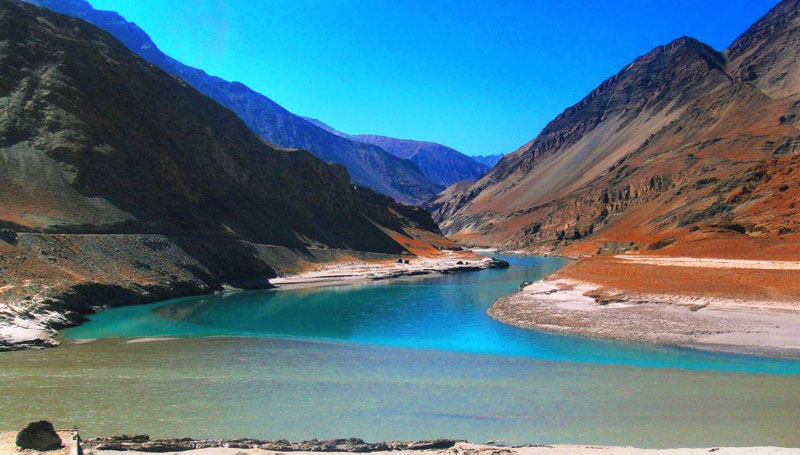
Some believe that the river is guided by the will of the gods, and that its disappearance is a sign of divine intervention. Others suggest that the river may be connected to underground aquifers that are influenced by the season or by celestial alignments, though no scientific evidence has proven this theory conclusively.
Adding to the mystery are the strange markings found near the river’s source. Some locals claim to have seen unusual symbols or carvings along the riverbanks, suggesting that the river holds some greater purpose, beyond mere water flow. Could the river’s behavior be connected to ancient rituals or hidden knowledge?
As researchers continue to investigate the cause of the river’s strange disappearance, the Zanskar River remains one of the Himalayas’ most enduring and puzzling enigmas, with its true nature still locked within the mountains’ secrets.
16. The Phantom Llamas of Ladakh: A Lost Herd?
In the high-altitude deserts of Ladakh, an unusual mystery has taken root. It is said that a herd of phantom llamas roams the barren landscape, their existence unconfirmed by any scientific evidence. The llamas are reported to appear only at dusk, their forms barely visible on the horizon, walking in perfect unison, as if guided by an invisible force. Trekkers and locals claim to have seen them, yet when they approach, the llamas mysteriously vanish into the wilderness.
The strange sightings have baffled experts, who argue that the animals may be mere illusions caused by the shifting light of the setting sun, or mirages resulting from the intense heat of the desert landscape. However, the consistency of these sightings over the years, with specific details matching from different eyewitnesses, has fueled theories that something far stranger is at play.

Locals hold the belief that these llamas are the spirits of ancient travelers or monks, appearing only to those who are deemed worthy. According to local folklore, the llamas were once real animals, bred by a long-lost civilization that inhabited the region. When the civilization mysteriously disappeared, the llamas were said to have disappeared with it, only to return as ghosts or specters.
Could these sightings be the result of environmental factors like optical illusions, or is there a deeper, spiritual connection to these elusive creatures? The mystery of the phantom llamas endures, with many still searching for answers.
17. The Mysterious Green Flash Above Kanchenjunga
The skies above Kanchenjunga, one of the highest peaks in the Himalayas, are often clear and pristine, offering a breathtaking view of the stars. But there is one phenomenon that has perplexed those who have witnessed it—a sudden green flash that appears just before sunrise or after sunset, hanging in the air above the peak for a few seconds. This green flash, which seems to emanate from the mountain itself, has been described as both beautiful and eerie.
Some scientists have attempted to explain this flash through the lens of atmospheric optics. It could be a rare optical illusion caused by the refraction of light in the atmosphere under specific conditions. However, despite numerous attempts to study the phenomenon, no one has been able to conclusively explain why it only occurs over Kanchenjunga or why it is often associated with a sense of foreboding or awe.

Many locals believe that the green flash is a sign from the gods or a signal from the mountain itself, indicating either an omen of good fortune or a warning to those who dare to climb it. There are stories of adventurers who have seen the flash just before experiencing calamities or being forced to turn back from the peak. Could it be a divine sign, or is it a natural occurrence that we simply don’t yet fully understand?
Whatever the cause, the green flash of Kanchenjunga remains one of the most mysterious and captivating phenomena in the Himalayas, with its exact origins still elusive.
18. The Phantom Yeti of Makalu
The Yeti, or the “Abominable Snowman,” has been a subject of fascination for centuries. But in the Makalu region of the eastern Himalayas, there are claims of a unique variety of Yeti sightings that differ from the traditional narrative. Witnesses in this area describe seeing a larger, more shadowy figure, one that moves in a way unlike anything known to man or beast. Often reported as being seen at twilight or in the thick of snowstorms, this phantom Yeti leaves behind no footprints, only a strange, unsettling aura in its wake.
What makes this mystery even more perplexing is the unusual consistency in witness descriptions. Unlike the typical Yeti, which is described as a large, ape-like creature, the phantom Yeti of Makalu is said to be cloaked in a shimmering aura, appearing almost spectral in nature. Some claim that the creature’s eyes glow with an otherworldly light, and others believe that it communicates telepathically with those it encounters.

Over the years, various expeditions have been launched to track the phantom Yeti, but none have succeeded in capturing definitive evidence. Some theories suggest that this creature may be a form of projection or manifestation, connected to the spiritual significance of the Makalu region. Could the Makalu Yeti be a physical creature, a relic of a bygone age, or something entirely supernatural—an entity connected to the mystical energy of the Himalayas?
Whatever its true nature, the phantom Yeti of Makalu continues to captivate those who are drawn to the Himalayan wilderness, leaving behind an ever-growing trail of unanswered questions.
19. The Lost Temple of the Snow Leopard
In the remote valleys of the northern Himalayas, there is a legend of a temple dedicated to the snow leopard, a rare and elusive creature that roams the high mountains. The temple is said to be located in a hidden gorge, surrounded by towering cliffs and unreachable by ordinary means. According to local lore, the temple was once a place of great power, where monks would meditate and communicate with the spirits of the wild, including the snow leopard itself.
The mystery of the lost temple has intrigued many explorers over the years. Several expeditions have set out in search of it, but all have failed to find the temple or any clues as to its exact location. Some believe that the temple was constructed in such a way that it remains hidden from the eyes of outsiders, protected by the mountain itself. According to legends, the temple was not just a place of worship but a sanctuary for the snow leopard, which was revered as a spiritual guardian.

What makes this mystery particularly compelling is the fact that snow leopards are known to inhabit the region, but sightings of them are incredibly rare. Local villagers claim that the snow leopards themselves are the keepers of the temple, and only those deemed worthy by the creatures can find their way to it. The temple is thought to hold ancient wisdom and artifacts that could shed light on the spiritual relationship between humans and the natural world.
Could this hidden temple still exist, concealed by the mountains and protected by the elusive snow leopard, or is it simply a myth passed down through generations?
20. The Vanishing Villages of the Spiti Valley
In the Spiti Valley, an isolated region of the Indian Himalayas, there are stories of entire villages that have mysteriously vanished over the centuries. These villages, once thriving centers of life, are said to have disappeared without a trace, leaving behind only ruins and unanswered questions. The exact reason for their disappearance remains unknown, but local legends suggest that these villages were taken by an unknown force or that the villagers themselves vanished into the mountains, never to be seen again.
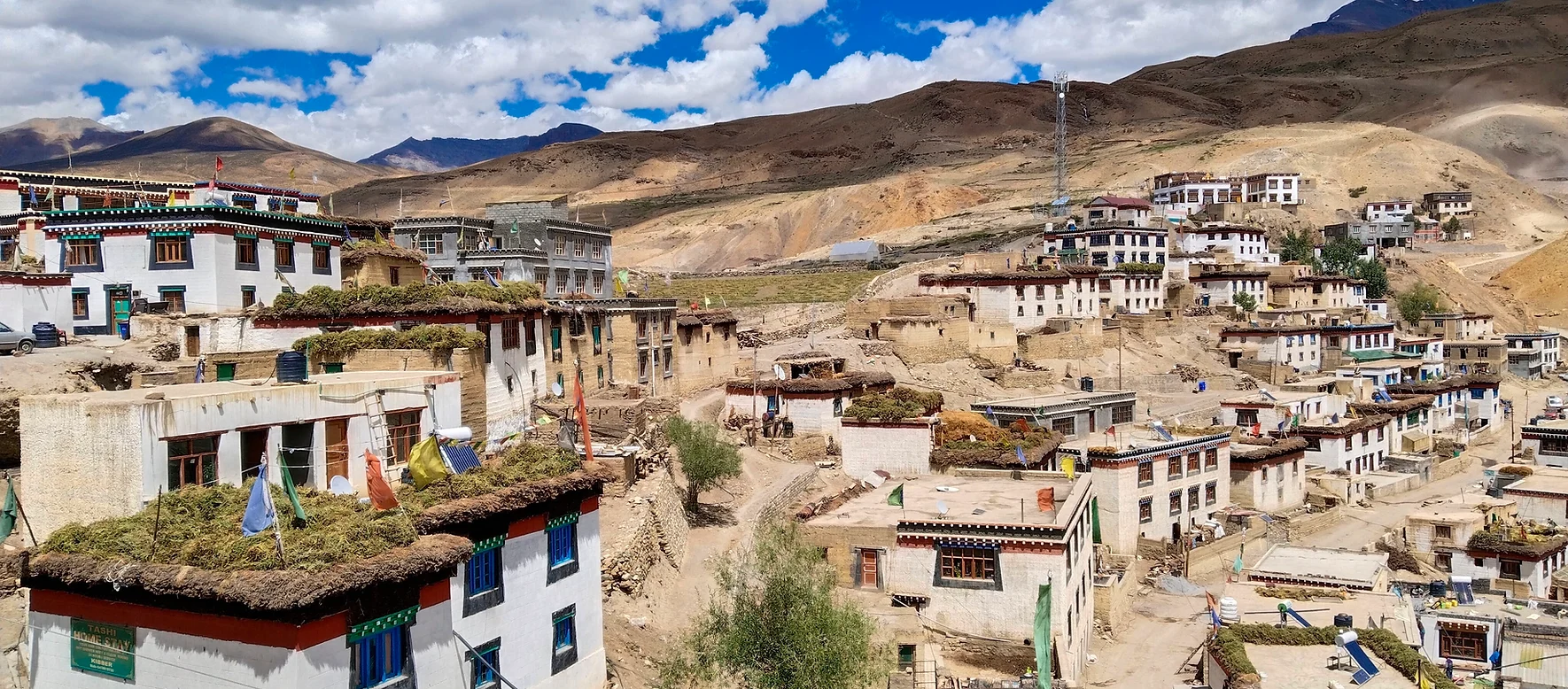
What makes these disappearances particularly strange is that no evidence of natural disasters, epidemics, or attacks has ever been found to explain why these villages were abandoned. Some villagers believe that the areas around these vanished villages are cursed, and that the spirits of those who once lived there still haunt the ruins. Others speculate that the villages disappeared due to a great spiritual reckoning, with the inhabitants fleeing into the mountains to escape an unknown force.
Despite several attempts to locate the lost villages, no new discoveries have been made. Could it be that the villagers found a hidden path, leading them to a new home? Or is there something more mystical at play, where the villages themselves have vanished into another realm, never to return? The mystery of the vanishing villages continues to intrigue those who venture into the Spiti Valley, keeping the secrets of the past locked away in the heart of the Himalayas.
Latest Updates







 Let’s imagine, explore, and uncover the mysteries together!
Let’s imagine, explore, and uncover the mysteries together!